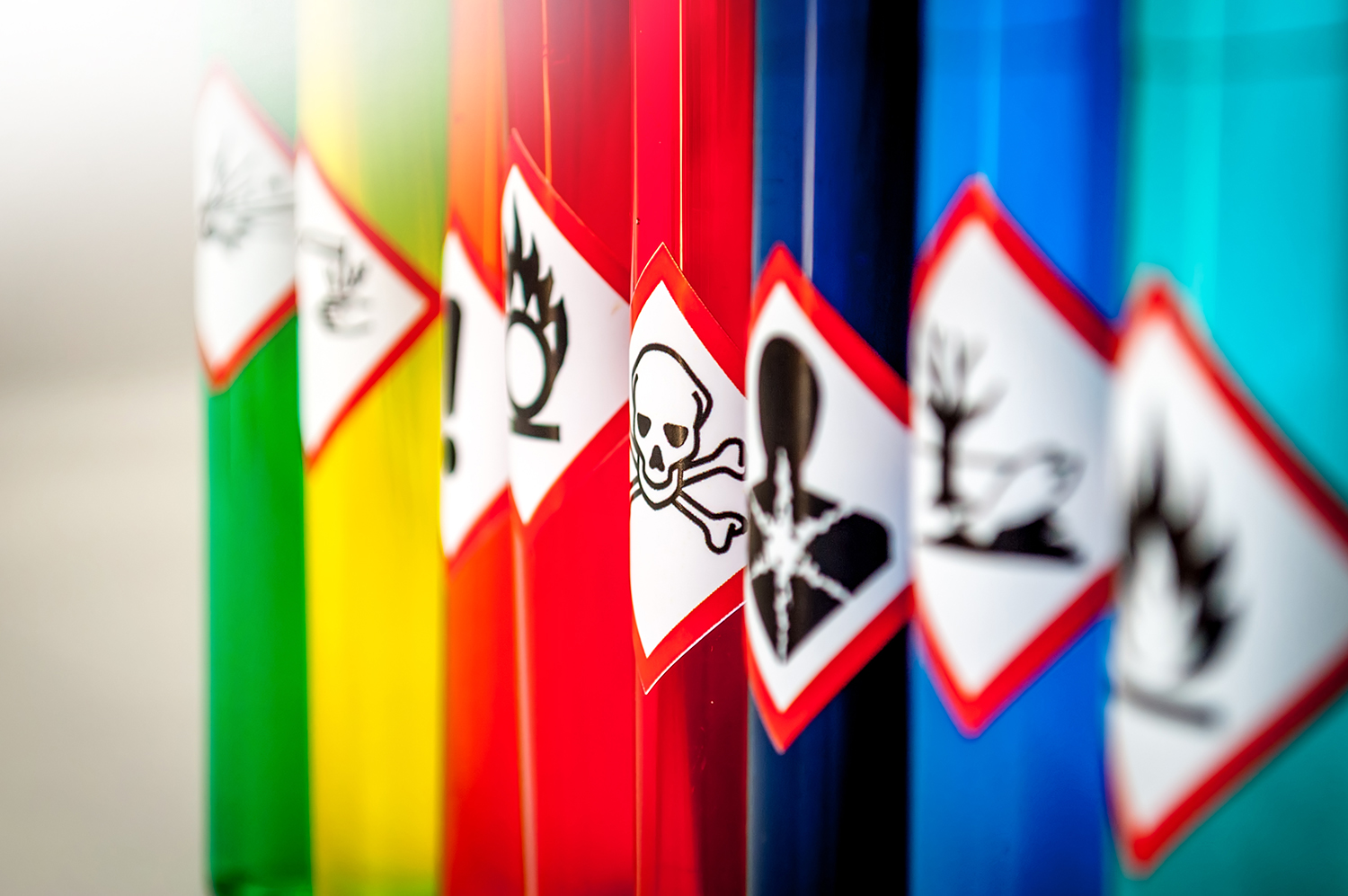RCC Laboratories

REACH (Registration, Evaluation and Authorization of Chemicals) is the EC1907/2006 Regulation, which is effective from 1stJune 2007 and replaces all previous legislation on authorization of chemicals in the European Union (EU). In fact, it opens a single window system, for both “existing” and “new” chemicals manufactured in or imported into the EU in quantities minimum 1 tonne or more per year. Although REACH is a European regulation, it impacts global manufacturers.
According to REACH requirements, industry has the responsibility to ensure that the chemicals it manufactures, imports and released in the EU market do not have adverse effect in both human health and/or the environment. It requires manufacturers and importers of chemicals into the European Union (EU) to submit hazard, use, and risk data for all compounds.
RCC has extensive knowledge and expertise to conduct studies as mentioned below for different tonnages. Also supports dossier preparation using the latest version of IUCLID tool for REACH support.
If any of your study requirements are not listed, please contact us.

| Tonnage | Physico-Chemical Properties | Toxicology | Ecotoxicology |
|---|---|---|---|
| 1-10t | State of the Substance at 200C and 101,3, kPa | Skin corrosion(in vitro); Human Skin Model EPIDERM | Short-term aquatic toxicity invertebrates (Daphnia) |
| Melting Point | Skin irritation (in vitro) Human Skin Model EPISKIN |
Growth inhibition aquatic plants (algae) | |
| Boiling Point | Skin irritation (in vitro) Human Skin Model EPIDERM |
Ready biodegradability | |
| Relative density (Liquids & Solids) | Membrane Barrier Test (in vitro); Method of Skin Corrosion-CorrositexTM | ||
| Vapour pressure | Eye irritation HET CAM | ||
| Surface Tension | Eye Corrosion BCOP | ||
| Water Solubility (At one pH and one temperature) | Eye Irritation (in vitro) Epi Ocular | ||
| Water Solubility (At pH 4, 7, 9 and in water at 200C; Temperature dependency at pH 7 (100C and 300C) | Skin sensitization: Local Lymph Node Assay | ||
| Partition coefficient n-octanol/water | Skin sensitization: Local Lymph Node Assay- BrdU-ELISA | ||
| Flash point (Liquids) | Skin Sensitisation – Magnusson/Kligman | ||
| Flammability (Solids) | |||
| Explosive properties | Reverse mutation Test (Ames-Test) | ||
| Self-ignition temperature (Liquids) | Acute Oral Toxicity | ||
| Self-ignition temperature | |||
| Oxidising properties (Liquids) | |||
| Oxidising properties (Solids) | |||
| Granulometry (Solids) | |||
| 10-100t | Acute Skin irritation/corrosion(in vivo) | Short-term aquatic toxicity in fish | |
| Acute Eye irritation/corrosion (in vivo) | Activated sludge respiration Inhibition test | ||
| Micronucleus Test in Chinese Hamster Cells (in vitro) | Hydrolysis as a function of pH | ||
| Micronucleus Test in Human Lymphocytes (in vitro) | Absorption/desorption screening | ||
| Chromosome Aberration Test in Chinese Hamster Cells (in vitro) | |||
| Chromosome Aberration Test in Human Lymphocytes | |||
| Mouse Lymphoma Assay | |||
| HPRT-Test | |||
| Acute toxicity (by inhalation) | |||
| Acute toxicity ( by dermal route) | |||
| Repeated Dose Oral Toxicity - 28 Day, Rat | |||
| Repeated Dose Dermal Toxicity - 21 Day, Rat | |||
| Repeated Dose Dermal Toxicity - 28 Day, Rat | |||
| Repeated Dose Inhalation Toxicity - 28 Day or 14 Day Study | |||
| Screening for reproductive/developmental toxicity -Rats | |||
| Combined repeated dose Toxicity study with the Reproductive/ Developmental Toxicity Screening Test-Rats | |||
| Toxicokinetics | |||
| 100 -1000t | Stability in organic solvents and identity of relevant degradation products | Micronucleus Test-Mouse Peripheral Blood Cells (in vivo) | Long-term aquatic toxicity on invertebrates (Daphnia) - 21 Day |
| Dissociation constant in water | Micronucleus Test- Hematopoietic Bone Marrow (in vivo) | Long-term aquatic toxicity in fish | |
| Viscosity | Chromosome Aberration-Test: Mouse (in vivo) |
Fish Early-Life Stage Toxicity test – Zebra fish | |
| Unscheduled DNA Synthesis (UDS) test (in vivo) | Short term toxicity test on Embryo and Sac-Fry stages for fish - Zebra fish | ||
| Comet assay (in vivo) | Aerobic Transformation in 1 Soil (Route); Radiolabeled test item | ||
| Mammalian Spermatogonial Chromosome Aberration Test | Aerobic Transformation in 1 Soil (Route); Radiolabeled test item | ||
| Repeated Dose Oral Toxicity - 90 Day; Rat | Anaerobic Transformation in 1 Soil (Rate); per soil; depends strongly on set up; Radiolabeled test item | ||
| Repeated Dose Dermal Toxicity - 90 Day; Rat | Aerobic Transformation in 2 Water/Sediment Systems; Radiolabeled test item | ||
| Sub-chronic Inhalation Toxicity - 90 Day Study | Anaerobic Transformation in 2 Water/Sediment Systems; Radiolabeled test item | ||
| Pre-natal development toxicity study -Rat | Aerobic mineralization in Surface Water | ||
| Pre-natal development toxicity study -Rabbit | Identification of Metabolites (Degradation Products) | ||
| Bioaccumulation in aquatic species (fish) | |||
| Absorption/Desorption (5 soils); Tier 1-2 & Tier 1-3 | |||
| Short-term terrestrial toxicity on invertebrates -Earthworm | |||
| Effects on soil micro-organisms | |||
| >1000t | 52 week Oral Toxicity Study -Rats | Terrestrial Plant Test: Seedling Emergence | |
| Extended One Generation Reproductive Toxicity Study - Rat | Terrestrial Plant Test: Vegetative Vigour | ||
| Two Generation Reproductive Toxicity Study - Rat | Long -term terrestrial toxicity on invertebrates -Earthworm | ||
| 2 Year Carcinogenicity Study in Rat | Terrestrial Plant Test: Seedling Emergence | ||
| Dietary Combined Chronic Toxicity/Carcinogenicity Study in Wistar Rat | Terrestrial Plant Test: Vegetative Vigour | ||
| Long term Toxicity to Sediment Organisms | |||
| Avian Reproduction Study |